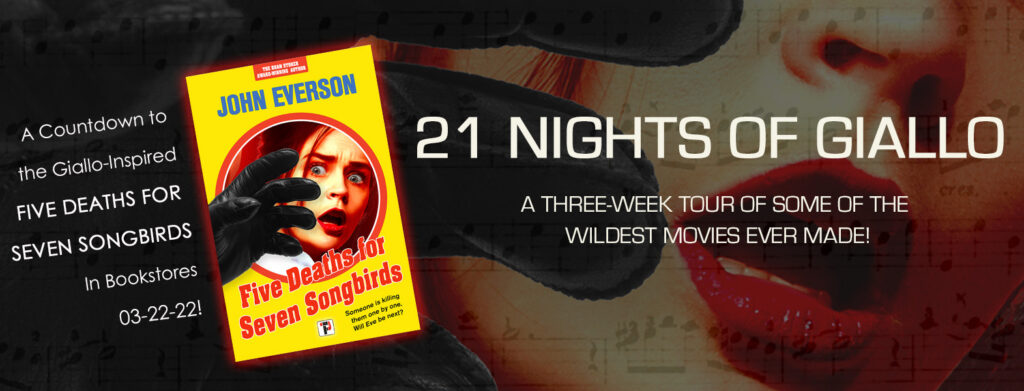
I AM A HUGE FAN of Italian giallo films from the 1960s-1980s and own more than 100 of them on DVD and Blu-Ray. Over the first 21 days of March, I’ll review some of my favorites, from Dario Argento’s Deep Red to Sergio Martino’s The Strange Vice of Mrs. Wardh, to Lucio Fulci’s A Lizard in a Woman’s Skin and more. It’s because of my love of giallo that my 13th novel is called Five Deaths For Seven Songbirds. Giallo fans will no doubt recognize just from the structure of the title (not to mention the look of the cover) that this is a giallo homage, so I hope those who love these movies will check out the book… it’s truly my love letter to the form! This 21 Nights of Giallo series of reviews is a lead up to the release of the book on 3-22-22.
If you’re not familiar, giallo films were Italian murder-mystery-thrillers whose popularity peaked in the ’70s. There’s a good Wikipedia entry that offers background on their history and I did a column reviewing 10 Giallo Films for Halloween last year (I’ll avoid repeats of those 10 films here, so check out that blog entry as well!).
Mario Bava, Dario Argento, Lucio Fulci, Sergio Martino and Umberto Lenzi are some of the best known directors of the giallo form, while composers Ennio Morricone, Bruno Nicolai, and the band Goblin all did numerous evocative giallo film scores. Often the scores of these films have truly elevated the visuals in a profound way and without them… the movies would have had much less of an impact. Gialli typically involve a mysterious killer stalking women for some revenge/psychosexual motive, and there were several actresses who became known for appearing in the genre, including Edwige Fenech, Carroll Baker, Nieves Navarro (as Susan Scott), Rosalba Neri and Anita Strindberg. You’ll hear about all of them in the reviews to come. Here are the first week’s giallo reviews:
NIGHT #7:
A Lizard in a Woman’s Skin
Directed by Lucio Fulci
Screenplay by Fulci, Roberto Gianviti, José Luis Martínez Mollá, André Tranché
Music by Ennio Morricone
(1971)
Lucio Fulci directed several great gialli, but this is one of his strangest and best. It opens with bizarre, surreal dream sequence in which Carol (Florinda Bolkan, who also stars in Fulci’s Don’t Torture a Duckling) is first running through a train… then running through a crowd of naked people, and then suddenly seduced by a woman in a lavish bed… This initial scene really puts the viewer on the edge, as you really don’t know what exactly you’re getting into here.
We soon find that Carol is a troubled, brooding member of the bourgeois, the daughter of a wealthy lawyer Edmund Brighton, and married to her father’s junior partner Frank (played by Jean Sorel from The Sweet Body of Deborah and Paranoia).
She seems inordinately jealous of the crazy, loud hippie parties staged by her neighbor next door, Julia Durer (played by Swedish sexpot Anita Strindberg, who would go on to star in The Case of the Scorpion’s Tail and Who Saw Her Die, among other gialli). Julia’s frequent, late-night parties infuriate, yet excite Carol, evoking images of wild sex-and-drug orgies.
Carol recounts these in therapy and continues having strange variations on the initial dream, culminating in one bizarre moment with a giant flying goose and ultimately, the stabbing murder of her neighbor, Julia.

Things get complicated shortly thereafter when Julia turns up dead in a way that matches Carol’s dream… and Carol’s letter opener and fur coat are found on the scene.
Could it possibly be anyone other than Carol behind the murder … or is she somehow being framed by the weird stoned hippies looking on at the scene… or her cheating husband? And who was behind the phone call to Carol’s father, which leads him to accuse Frank of cheating and blackmail?
The second half of the film finds Carol held in an asylum as an “insanity” defense will be her best bet (which leads to a creepy, though ultimately unnecessary animal experiment scene which, ironically, eventually spawned a court hearing after the director was accused of real animal cruelty – the special effects were apparently very convincing to some at the time).
Meanwhile Frank’s daughter Joan gets involved as she tries to track down the hippies who, according to Carol’s dream, witnessed the murder (they tell the police they don’t remember anything about that night except “a lizard in a woman’s skin”). One of the pair, a knife-throwing woman, makes a great mysterious side character.
There’s a bat attack in a church belfry scene, a great police inspector character played by Welsh actor Stanley Baker (Zulu), strange delusional dreams including a lesbian sex scene ending in murder and a gut-wrenching death of an innocent all wrapped up in this mystery. Plus, it’s all held together by another amazing Ennio Morricone score, which runs the gamut from a dreamy jazzy vocalese main theme to a psychedelic hippie party track.
Available on DVD from Mondo Macabro.

10 out of 10 black-gloved fingers!
NIGHT #6:
What Have You Done to Solange?
Directed by Massimo Dallamano
Partly Written by Dallamano
Music by Ennio Morricone
(1972)
One of the great things about giallo films is that the characters are frequently all “grey”. Everyone has something to conceal. Which often makes for lots of potential suspects in whatever murder spree is going on because we know that nobody is completely innocent. That holds true in Solange, which centers around a series of murders at an all-girls school.
As Solange opens, Enrico (Fabio Testi, Red Rings of Fear), a gym teacher from the school, is making out in a boat with Elizabeth (Cristina Galbo of The Killer Must Kill Again), one of his students. Elizabeth interrupts their kissing when she sees the glint of a knife near the shore. And then she stops them again when the knife strikes. Enrico doesn’t believe her at first, accusing her of just making things up to put him off. He accidentally drops a special pen on the shore as they argue. That will later come back to haunt him when it is found near the scene of the crime.
When, the next morning, Enrico hears a news report on the radio about the shoreline murder, he ditches his icy German wife Herta (Karen Baal) to visit the scene of the crime, and ends up with his picture in the paper as one of the bystanders. Now there are two reasons for the police to link him to the crime (how did he know exactly where the murder site was and get there so fast? the inspector questions…) and the first half of the film revolves around Enrico trying trying to keep his illicit relationship with Elizabeth a secret from the police and Herta. He even sets Elizabeth up in a love nest… which will ultimately be their undoing.
There are more murders of girls from the school and after Enrico’s confession, he is let go from the faculty and becomes the film’s amateur sleuth (a role found in many gialli) to find out how a group of schoolgirls could somehow be involved, as they are clearly hiding something.
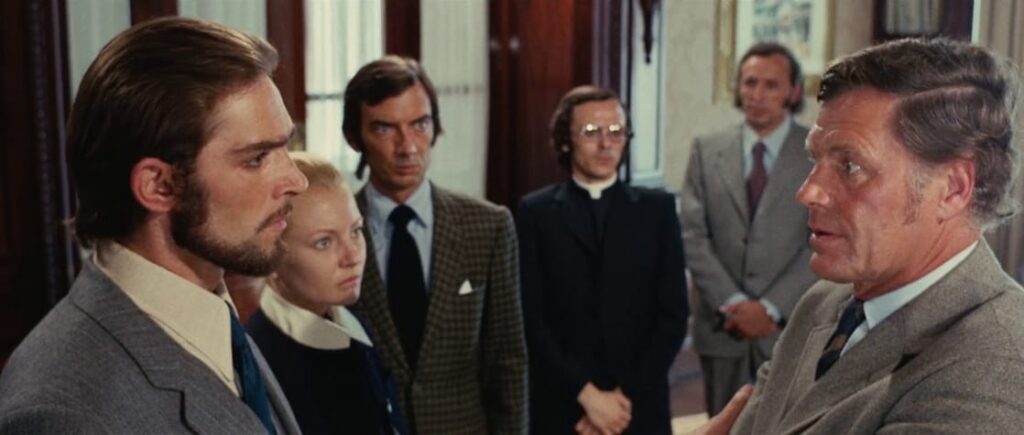
Somehow… a priest appears to be involved and somehow, it seems to tie back to a missing girl named Solange (played by future I Spit On Your Grave star Camille Keaton).
Could the murderer be the creepy peeping Tom on the faculty who has a fascination with the girls’ shower room? Or the priest on faculty? Or the photographer who knows about the secret sexual society of the cabal of girls?
You’ll just have to watch this one to find out. It’s definitely worth it, and stands as one of the top gialli of the period. And it features a memorable Ennio Morricone theme, which hinges on a simple melancholy piano line and supporting strings that recurs at various key moments in the film. There is a great blu-ray version available from Arrow Video and it is also available to rent streaming on Amazon Prime.

10 out of 10 black-gloved fingers!
NIGHT #5:
Death Laid an Egg
Directed by Giulio Questi
Written by Questi and Franco Arcalli
Music by Bruno Maderna
(1968)
This one’s an oddball. A giallo with sci-fi overtones, it centers around a couple named Anna and Marco, who have just converted their chicken farm to a fully automated feeding system, so they’ve fired all of their workers (who appear in an uneasy scene clutching the fence and looking in). They also have a bioengineer working on creating a breed of chicken that is essentially just a ball of meat. Marco hates all of this technology but his wife owns the farm and calls the shots.
This futuristic element is all just background though for the real plot, which is about who will ultimately control the profitable farm.
Death Laid an Egg (also released in a truncated version called Plucked) stars ‘60s sex symbol Gina Lollobrigida as Anna and Jean-Louis Xavier Trintignant (who appeared in several Alain Robbe-Grillet films, as well as the giallo So Sweet, So Perverse) as her husband. Anna’s cousin Gabri (played by Swedish sex symbol Ewa Aulin, best known for Candy) is staying with the couple, and Marco is carrying on a secret relationship with her, urging her to run away with him. Meanwhile, Mondaini (Jean Sobieski ), a new marketing manager at his company has been assigned to work with Marco to promote the chicken farm.
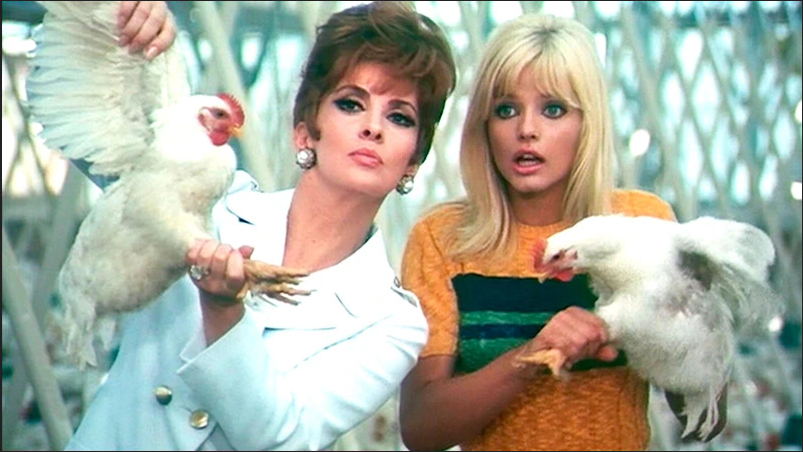
This is a classic “nothing is quite as it seems” kind of film. The film opens with a score of crashing, dissonant piano jazz over images of growing embryos, which leads into what appears to be the black gloved murder of a prostitute in a hotel room.
The dissonant score continues throughout the film, which successfully makes everything seem constantly uneasy and edgy… but it also gets a bit irritating after awhile! There is always a feeling of unbalanced “something’s about to go wrong” in the movie, and Trintignant’s constantly brooding demeanor lets us know that he’s up to something no good.
Or is he?
Gabri at first appears innocent and free-spirited, but she clearly is the obsession of both Marco and Anna, who enjoys helping Gabri groom. At one point, she tells Marco “she is like a puppet you can play with.” Later in the film, when Anna discovers that Marco frequently visits a “whore hotel,” she has Gabri help her dress up in a wig and lingerie to go to the hotel with the intent of surprising her husband when he realizes that the prostitute he has brought to his room is actually his wife.
There are a lot of ruminations on love and desire in the script, as characters say things like “So we tumble into our dreams so helpless, so full of desire” and “There is nothing in this world more elusive than love” and “Love is a mystery… love is a luxury.” But the characters all do things to soil the purity of love, including holding a game where couples “swap” and go into an empty room to have sexual relations. The clumsiness and emotional injury of the various trysts ends in Anna pushing Marco to go to the room with Gabri…
There are some eerie scenes in the henhouse and a couple of threatening slasher scenes where we don’t actually see the kill, just the result. This is not a slasher giallo, despite the suggestion of its first scene. It’s more a psychological thriller, with only two murders shown, as the true motives of all of our characters are revealed. It’s not a typical giallo, and the director and actors are not part of the “stable” of giallo stars, but it’s worth a watch for giallo fans. The Cult Epics blu-ray looks a little washed out and the opening credits have names extending off screen, which means this has been scanned to a different aspect than the original, so I’d love to see an upgrade to it. That and the grating score probably helped take a star off of its rating for me.
Available in a blu-ray from Cult Epics and streaming through Amazon Prime Video.

7 out of 10 black-gloved fingers!
NIGHT #4:
Puzzle
Directed by Duccio Terrari
Screenplay by Ernesto Gastaldi
Music by Gianni Ferrio
(1974)
Puzzle is not a typical giallo (no leather-gloved killers or quickly mounting body counts here). It starts off with one of the best setups for a mystery. Luc Merenda (Torso) plays Ted, who has lost his memory after a car accident and has no idea who he is. He has been “lost” in London for months. But then one night as he leaves his psychiatrist’s office, he meets a man who has information about his past. When they are alone, instead of a friendly exchange, the man accuses Ted of being a double crosser and pulls a gun on him. But an unseen sniper puts a sudden end to that threat, and Ted immediately receives a telegram suggesting that he is expected by his abandoned wife Sara (Senta Berger) in the Italian resort town of Portofino.
And off we go to unravel the mystery of Ted. Why did the man want to kill him? Why did someone save Ted’s life? He has a wife he doesn’t remember?
Meanwhile, somebody keeps breaking into Sara’s house and ransacking the place … but not taking anything. She has been trying to rebuild her life since being apparently abandoned by Ted, so when Ted arrives, their reuniting is a bit difficult because… there is someone else in her life now.
When Ted does arrive at the train station to meet her, he walks right past his wife, not recognizing her. But a man lurking at the train station steps out of the shadows to tell Ted that he has just walked past Sara, before disappearing. Again, Ted is being guided. But to what purpose?
Director Duccio Tessari (The Bloodstained Butterfly) does a nice job at slowly unpeeling the onion of Ernesto Gastaldi’s plot.

Over the next hour, we realize that Ted may not be exactly what we think he is… but then again, neither are some of the other characters. It’s… a puzzle! And a fun one to try to solve. While not filled with gory murders, Puzzle is a well-twined mystery to try to unravel.
The cast also includes Anita Strindberg in a small role, who giallo fans know from The Case of the Scorpion’s Tail, A Lizard In A Woman’s Skin and Your Vice Is A Locked Room And Only I Have The Key, as well as Bruno Corazzari from The Strange Vice Of Mrs Wardh and Seven Blood-Stained Orchids.
You can watch this one on a new 4K restoration from VCI or stream it on Amazon Prime (search for L’uomo Senza Memoria) as you’ll never find it just searching for Puzzle!

8 out of 10 black-gloved fingers!
NIGHT #3:
So Sweet…So Perverse
Directed by Umberto Lenzi
Story by Sergio Martino, Screenplay by Ernesto Gastaldi
Music by Riz Ortolani
(1969)
You only have to look at the credits to know this one is going to be good. With a holy trinity of giallo at the helm, it would be hard to fail. Ernesto Gastaldi was one of the most prolific Italian screenwriters of the period and wrote some of the best gialli ever made. Add in director Sergio Martino, who filmed some of the best and Umberto Lenzi, another consistently solid directorial force and you’ve got gold. And that’s before you even look at the cast.
There are some heavy hitters on the casting list too. Jean-Louis Trintignant (fresh from Death Laid an Egg) stars as Jean, a bourgeois industrialist whose marriage to Danielle (played by Erika Blanc from The Night Evelyn Came Out of the Grave) is all but over. She taunts him with lingerie and nakedness but won’t let him touch her… and apparently hasn’t for a year. “You’ve built a wall of ice between us,” he complains at one point. This gives us some sympathy for Jean when he takes up with Nicole, a mysterious blonde who moves into the apartment upstairs. Nicole is played by top-billed Carroll Baker, a Hollywood “fallen” star of the early ‘60s who experienced a career rebirth in Italy in the late ‘60s with The Sweet Body of Deborah and four films for Umberto Lenzi including Orgasmo and A Quiet Place to Kill.
As the film starts, we see Jean cruising around Paris in a yellow convertible and joining a soiree of socialites to compete at clay pigeon shooting… after which the host’s wife seduces him. It’s not long after that that Nicole turns up and he’s in bed with her… through Lenzi’s lens, the uppercrust of late ‘60s Europe led a morally destitute lifestyle… as the film goes on, we see multiple examples of decadence from several of the main characters. By the end of the film, you may realize that you don’t actually like… any of them! A quiet comment on the uppercrust?
But what’s it all about? Well, once he’s met Nicole, Jean is determined to save her from the abusive Klaus, who she is terrified of. At one point, she has flashbacks to Klaus raping her on the beach which ends in her running topless towards the camera as the scene is tinted red. “He enjoys hurting me,” she says. Jean takes her away for a few days to escape both Klaus and his wife… which leads to some gorgeous beach scenes… but the relentless Klaus turns up in a motorboat, spying on them and eventually breaking in. At last Nicole divulges a secret that, if Jean would only have listened, would have ended the film. Thankfully for our entertainment, our pigheaded “hero” continues to try to save her… and this leads to the film’s first murder – and a huge shift in the story.

There are actually only two murders in the film – a very low body count by gialli standards, but So Sweet So Perverse makes up for that with lots of red herrings and shifts – just when you think you know where this film is going… it takes a left turn. And then another. It’s hard to say too much about it without ruining those surprises and this one’s worth a watch so I’ll stop with the plot there!
Stylistically, Lenzi sets up some gorgeous shoots, focusing on beautiful landscapes and décor, with lush reds and greens popping off the screen. Music is often a key component for a good giallo and the score here offers an achingly catchy but melancholic pop theme song called “Why” which turns up a few times through the film (you may find yourself humming it afterwards), as well as some jazzy keyboard driven themes that remind you that this is very much a late ‘60s film.
The Severin Films’ Complete Lenzi-Baker Giallo Collection offers a beautiful remastered version of the film, as well as a great commentary by Kat Ellinger, author of All The Colors Of Sergio Martino.

8 out of 10 black-gloved fingers!
NIGHT #2:
The Strange Vice of Mrs. Wardh
Directed by Sergio Martino
Screenplay by Ernesto Gastaldi, Eduardo Brochero and Vittorio Caronia
Music by Nora Orlandi
One of director Sergio Martino’s best films, The Strange Vice of Mrs. Wardh includes plenty of familiar faces to Martino fans. With a script in part from the omnipresent Ernesto Gastaldi, the cast features the ever-alluring, dark-eyed Edwige Fenech (All the Colors of the Dark) as Julie Wardh, a woman tortured by her need for sexual kinks. She married career diplomat Neil Wardh (Alberto de Mendoza from The Case of the Scorpion’s Tail) in order to escape a destructive relationship with Jean (played with a wickedly dangerous humor by Ivan Derasimovic, who also appears with Fenech in Martino’s Your Vice is a Locked Room and Only I Have the Key).
But old lovers have a strange way of popping back up, and when Julie and Neil return to Vienna after some time away, Jean reappears, trying to rekindle his violent sexual relationship with her. She is saved from Jean by falling into another questionable liaison with George (played by George Hilton, who also appears with her in All the Colors of the Dark.) Meanwhile, a straight razor-wielding, black-gloved killer is picking off girls around the city. Soon after she takes up with George, someone calls to blackmail Julie, which leads to a great cinematic scene in a park at dusk where the pathway hedges seem to stand a mile high, boxing in the killer and his prey.
I’ve seen the film several times, but the ultra-twist ending catches me every time (I have a terrible memory, so I can often rewatch films and enjoy them just like new!)
Who is the killer, and can Julie escape him… and her dangerous past? I will give you no hints.
This is top-shelf giallo, with some great period jazzy organ soundtrack music from Nora Orlandi, who includes a Goblin-esque main theme with eerie voices carrying the melody line that repeats throughout. The blue-green-gold-white wallpaper of Julie’s apartment is worth mentioning because it is both visually striking and… so ‘70s chic! As is the “swingin’” dance party scene where two girls end up ripping off each other’s party dresses.

The film also has a fun tie to one of Martino’s next films. At one point, after sleeping with George, Julie gets roses and a note: Now I know you’re trying to get away from me… but your vice is like a room locked from the inside and only I have the key. A year later, Fenech would star in Martino’s Your Vice is a Locked Room and Only I Have the Key. The two films are not related… outside of that very cool line.
Roses and attached notes are a repeating plot device in this film and definitely amp up the suspense factor.
The “kills” in this one are not too elaborate – the film opens with a prostitute being slashed across the throat in a car, and later there is a typical (and well-shot) shower slashing, as well as a killing in the park mentioned above. The killer is a slash-and-dash type though – no unexpected instruments or setups. But the mystery and twists that this story eventually takes, as well as the meaning behind the series of deaths and how they relate to Julie, are gold.
It opens with a great quote from Sigmund Freud, which sets the tone of “it could be anybody” right from the start:
“The very emphasis of the commandment: Thou shalt not kill, makes it certain that we are descended from an endlessly long chain of generations of murderers, whose love of murder was in their blood as it is perhaps also in ours.” – Sigmund Freud
If you haven’t seen it, stop reading this and go watch it! Like Deep Red, if I was introducing someone to the giallo genre for the first time, this one would be in my Top 5 list to show them. There’s a solid blu-ray edition available from Severin and it’s streaming for free on Amazon Prime.

10 out of 10 black-gloved fingers!
FUN ASIDE: Sergio Martino made some of my favorite giallo films in the ’70s, so when I wrote Five Deaths for Seven Songbirds, I reached out to him and shared the manuscript with him. He read it and sent me this blurb for my publisher to use: “I read this story with ever-increasing interest. The dynamics and tension felt reminiscent of my thriller films from the 70s and 80s, which have been appreciated by many American directors such as Quentin Tarantino. It would make a great film for lovers of the genre. Ottimo intrigo! Enjoy the read everyone!”
It’s truly hard to beat the feeling of having one of your idols say something nice about your work!
NIGHT #1:
Deep Red
Directed by Dario Argento
Written by Argento and Bernardino Zapponi
Music by Goblin
Deep Red is hailed with good reason as one of the best giallo films ever made, so it’s a perfect place to start a survey of gialli! Dario Argento had previously helped popularize the genre with his debut The Bird With The Crystal Plumage, The Cat O’ Nine Tails and Four Flies on Red Velvet. After a short break from gialli, this was his triumphant return, starring David Hemmings and Argento’s romantic partner at the time, Daria Nicolodi.
Deep Red opens with a scream and the silhouette of someone being stabbed to death near a Christmas tree, and then a child’s feet standing next to a blood-covered knife on the floor. We know that somehow, this prologue murder sets the stage for some horrible chain of events to follow.
The film proper starts after the end credits in a gorgeous red-curtained and gold gilt theater, where a famous psychic performing parlor tricks suddenly intercepts the thoughts of a killer in the audience. Her head reels back and she points to the crowd, accusing someone of “perverted murderous thoughts” and then she cries “You have killed and you will kill again. There is a child singing in that house. Death. Blood.” We see what is presumably the killer vacate a seat and head to the restroom and then later overhear the psychic telling someone that she knows who the killer is. That night, when the psychic is alone in her room and hears a singsong children’s tune playing somewhere nearby, we know that the first murder is soon to follow. It does… thanks to a large meat cleaver.
It’s a great dramatic kick-off for what will be a bloody mystery to follow.
Cut to an empty city square where pianist Marcus (David Hemmings) helps his drunken musician friend Carlo up from the street when they hear a horrible scream from a building nearby. Marcus sends Carlo back to his gig at the bar and then sees the psychic being killed in the window above. He races up to try to help and sees a clue while in the apartment that will haunt him through the rest of the film. When reporter Gianna (Daria Nicolodi) shows up, the two begin a fun flirtatious relationship that gives the film a few great moments of humor (she drives a car that is something like a human mousetrap!) as they spar over women’s lib and trying to one-up each other.

Marcus soon gets a near-miss visit from the killer and begins playing amateur sleuth. However, one by one, the people he visits to try to track down the identity of the killer… end up dead, each death preceded by the eerie theme of the children’s song.
Gruesome kills, a murderous mechanical doll, a sadistic child who enjoys skewering lizards, some clever clues and deceptions (including a great disappearing message from a dying woman written in steam on a bathroom wall)… Deep Red offers a deep mystery that you’re not likely to unravel before Marcus.
There are some truly creepy, memorable scenes in Deep Red, and the excellent cinematography is made doubly effective by the Goblin-produced score. It was the first time Argento worked with the band on film music and it began a partnership that would continue for decades.
If you have never seen Deep Red and you love a great mystery with likeable characters and a good twist, do yourself a favor and watch this one! Arrow has just released a gorgeous 4K scan of it, but their regular blu-ray looks great as well and you can stream it on Amazon Prime. This is a classic worth watching again and again. And I have!

10 out of 10 black-gloved fingers!
FUN ASIDE: A couple years ago, Claudio Simonetti’s Goblin did a tour where they played the full score of Deep Red live, while the movie projected behind them. I saw the Chicago show, which was an amazing, unique experience and afterwards lucked into meeting Claudio and shooting a picture with him. You can see that and other pictures from the show on my blog here.
Don’t stop now! The survey of 21 giallo films continues in two more installments:









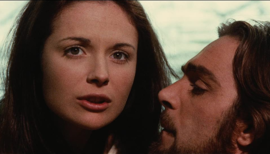

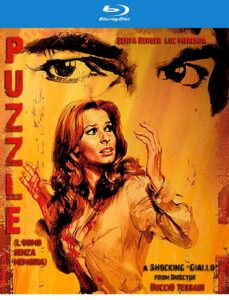
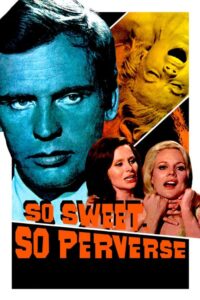
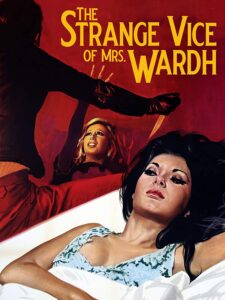
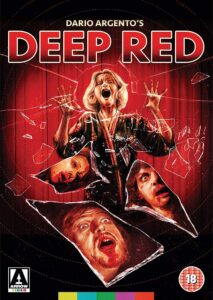

Pingback: 21 Nights of Giallo: Week 2 ~ John Everson
Pingback: 21 Nights of Giallo: Week Three ~ John Everson
Pingback: 2022: A Very Giallo Year! ~ John Everson